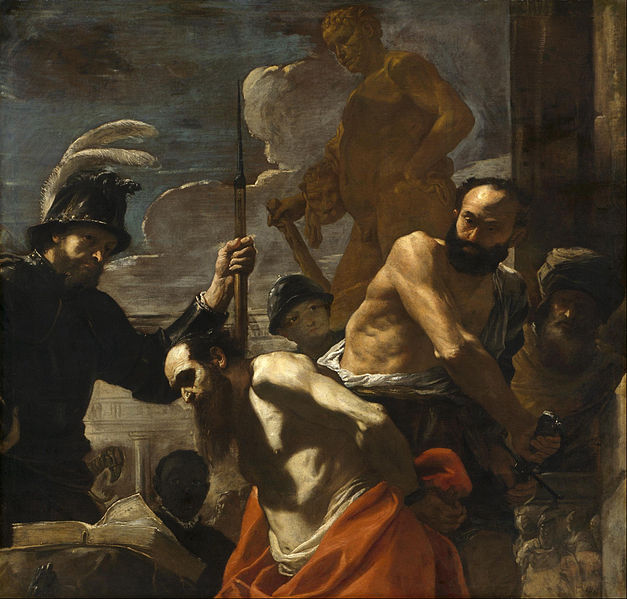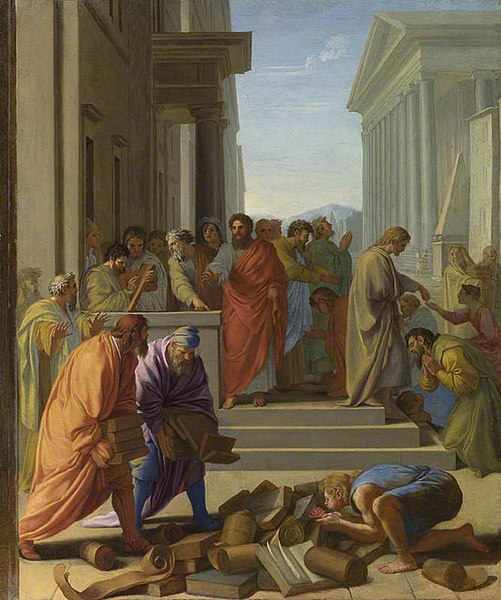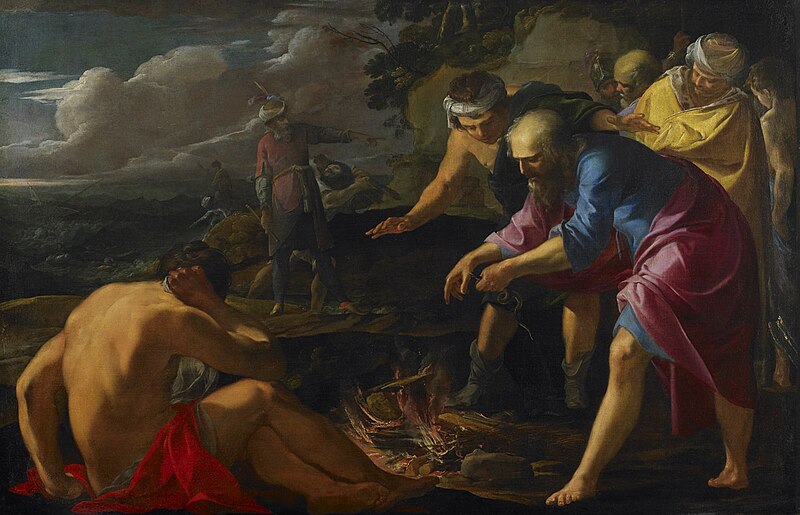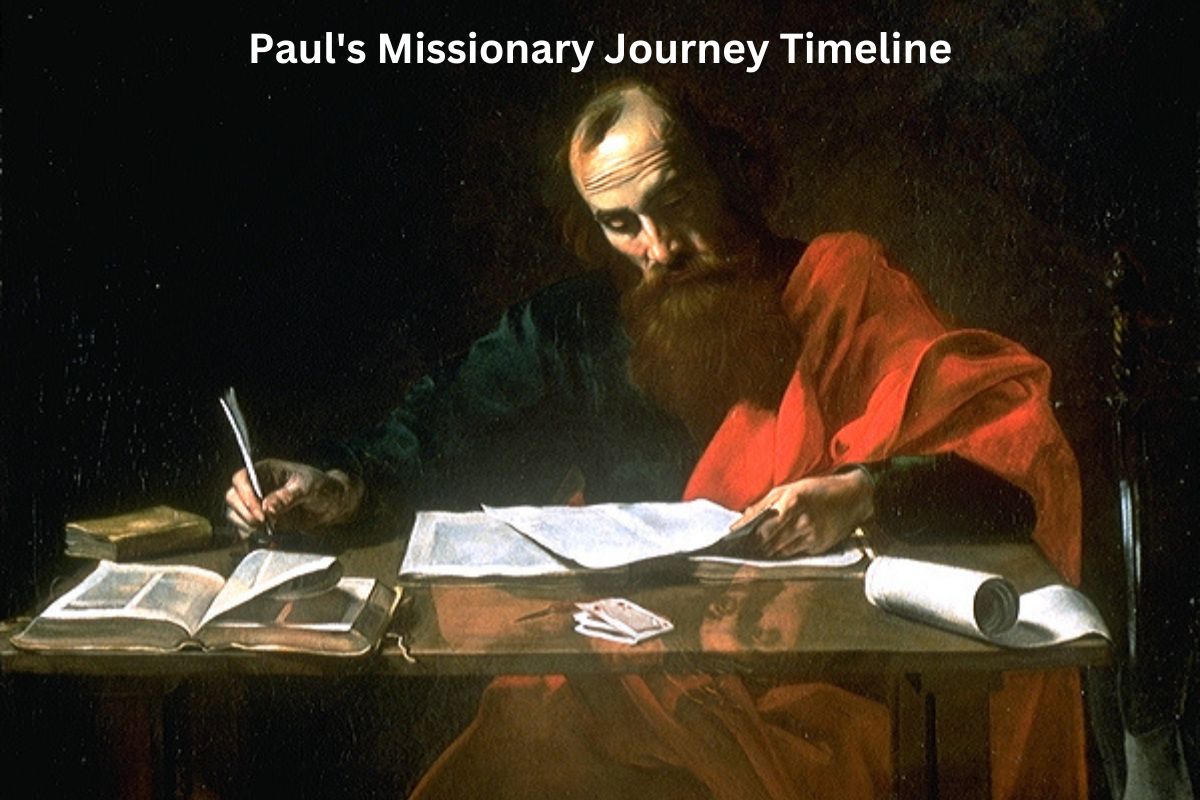The Apostle Paul, also known as Saint Paul, played a pivotal role in the spread of Christianity during the early days of the faith.
His missionary journeys, as chronicled in the New Testament of the Bible, were instrumental in establishing Christian communities and sharing the teachings of Jesus Christ with diverse populations across the Roman Empire.
These journeys not only laid the foundation for the global expansion of Christianity but also provided valuable insights into the challenges and triumphs of early Christian evangelism.
Paul’s missionary journeys are typically divided into three main journeys, each marked by significant events, challenges, and the establishment of new churches.
In this timeline, we will explore the key highlights of each of these journeys, shedding light on the locations visited, the people encountered, and the enduring impact of Paul’s ministry.
These journeys offer a profound narrative of faith, resilience, and the enduring power of the Gospel message. Let us embark on a journey through the life and travels of the Apostle Paul, a figure whose missionary zeal continues to inspire Christians worldwide.
| Missionary Journey | Timeline | Stops and Significant Events |
|---|---|---|
| First Missionary Journey | circa 46-49 AD | Cyprus: Preached in Salamis and Paphos. Pamphylia: Visited Perga. Pisidia: Preached in Antioch (not to be confused with Antioch in Syria). Iconium: Preached and faced opposition. Lystra: Healed a lame man, but was stoned. Derbe: Preached. Return: Revisited the cities and appointed elders, then returned to Antioch. |
| Second Missionary Journey | circa 49-52 AD | Revisited Derbe and Lystra. Troas: Received a vision of a man from Macedonia, prompting him to go to Europe. Philippi (in Macedonia): Preached and established a church. Thessalonica: Preached but faced opposition. Berea: Preached, and the Bereans were more receptive. Athens: Preached on Mars Hill (Areopagus). Corinth: Spent a significant amount of time and wrote letters to the Thessalonians. Cenchreae: Departed for Syria. Return: Briefly visited Ephesus and returned to Antioch. |
| Third Missionary Journey | circa 53-58 AD | Revisited Ephesus and spent two years there. Traveled through Macedonia and Greece, collecting funds for the church in Jerusalem. Returned to Troas and preached. Troas: Raised Eutychus from the dead. Miletus: Delivered a farewell address to the Ephesian elders. Caesarea: Imprisoned briefly. Jerusalem: Arrested and taken to trial. Imprisoned in Caesarea for about two years. Voyage to Rome: Appealed to Caesar and was sent to Rome for trial. Shipwreck on Malta. Arrival in Rome: Preached while under house arrest. |
Timeline of the Apostle Paul’s Missionary Journey
First Missionary Journey (circa 46-49 AD):
Departure: Paul’s First Missionary Journey began in the city of Antioch in Syria, where he was based with Barnabas.
Cyprus: Their first stop was the island of Cyprus. In Cyprus, they preached in Salamis and Paphos, sharing the message of Jesus Christ with the Jewish and Gentile populations. This marked the beginning of their missionary work.
Also Read: New Testament Chronological Order
Pamphylia: After leaving Cyprus, Paul and Barnabas traveled to Pamphylia. Here, they visited the city of Perga, where they continued their mission to spread Christianity.
Pisidia: Moving on from Pamphylia, they arrived in Pisidia. In Pisidia, they came to the city of Antioch (not to be confused with Antioch in Syria). Paul delivered a sermon in the synagogue, explaining the significance of Jesus as the Messiah. While some people were receptive to their message, others opposed them, and they faced persecution.

Iconium: From Pisidia, they journeyed to the city of Iconium. Here, they preached the Gospel and faced both acceptance and opposition. Despite challenges, they continued to spread the teachings of Jesus.
Lystra: In Lystra, Paul and Barnabas encountered a man who had been lame from birth. Through the power of God, Paul healed the man, which led the local people to believe that Paul and Barnabas were gods. However, their fortunes changed quickly, and they were stoned by a hostile crowd. Paul was left for dead but survived.
Also Read: Timeline of the History of Christianity
Derbe: Despite the challenges in Lystra, they pressed on to the city of Derbe, where they continued to preach and make disciples.
Return: After reaching Derbe, Paul and Barnabas retraced their steps, revisiting the cities they had previously been to, strengthening the believers, and appointing elders to oversee the new Christian communities. Finally, they returned to Antioch in Syria, where they had started their journey, completing their First Missionary Journey.
Paul’s First Missionary Journey laid the foundation for his subsequent missionary endeavors, as he ventured out to spread the message of Christianity to different regions, both to the Jewish communities and to the Gentiles. It was marked by a mixture of successes and challenges, but it set the stage for the expansion of the Christian faith beyond its initial centers.
Second Missionary Journey (circa 49-52 AD):
Departure: Paul’s Second Missionary Journey began in Antioch in Syria, where he and his companion, Silas, departed to continue their missionary work. Initially, they planned to revisit the churches they had established during the First Missionary Journey.
Revisiting Derbe and Lystra: Their journey took them back to Derbe and Lystra, where they strengthened the faith of the believers they had previously converted.
Troas and the Macedonian Call: While in Troas, Paul received a vision during the night. In the vision, a man from Macedonia pleaded with him to come and help. Taking this as a divine call to preach in Europe, Paul and his companions sailed to Philippi in Macedonia.
Philippi: In Philippi, Paul and his companions began their ministry. They met Lydia, a seller of purple cloth, who became one of the first converts in Europe. Later, they were imprisoned after casting out a demon from a slave girl. An earthquake miraculously opened the prison doors, leading the jailer and his household to believe in Jesus.

Thessalonica: Leaving Philippi, they arrived in Thessalonica and preached in the synagogue. Although they had some success in converting Jews and Gentiles, they faced opposition from some Jewish leaders who stirred up a mob against them.
Berea: Fleeing the hostility in Thessalonica, they went to Berea. The Bereans were known for their openness to the Scriptures and received the message with eagerness. However, opposition from Jews in Thessalonica prompted Paul to leave Berea.
Athens: Paul traveled to Athens alone while Silas and Timothy stayed behind. In Athens, Paul engaged with philosophers on Mars Hill (Areopagus), where he delivered a famous speech about the “unknown god” to the Athenians, proclaiming the one true God and the resurrection of Jesus Christ.
Corinth: Leaving Athens, Paul arrived in Corinth. He met Aquila and Priscilla, fellow tentmakers, and they became close friends and coworkers in ministry. Paul spent a significant amount of time in Corinth, preaching and establishing a church. He also wrote letters to the Thessalonians during his stay in Corinth.
Cenchreae: After his ministry in Corinth, Paul sailed to Cenchreae, a port city, and then departed for Syria, concluding his Second Missionary Journey.
Paul’s Second Missionary Journey was marked by significant expansions of the Christian faith into Europe, including the establishment of churches in Philippi, Thessalonica, and Corinth. It also demonstrated Paul’s ability to adapt to different cultural contexts, from the Jewish synagogues to the philosophical setting of Athens. However, it was not without its challenges, including opposition and persecution from various quarters.
Third Missionary Journey (circa 53-58 AD):
Departure: Paul’s Third Missionary Journey began from the city of Antioch in Syria, his home base for missionary activities.
Revisiting Ephesus: Paul’s journey initially took him to Ephesus, where he had previously spent a significant amount of time during his Second Missionary Journey. In Ephesus, he found some disciples who had not yet received the Holy Spirit, and he baptized them in the name of Jesus.
Macedonia and Greece: After his time in Ephesus, Paul traveled through Macedonia and Greece. During this period, he continued his practice of strengthening existing churches and preaching the Gospel.

Collecting Funds for Jerusalem: One of the key aspects of this journey was Paul’s effort to collect financial support from the churches he had established for the struggling Christian community in Jerusalem. He urged the believers in Macedonia and Achaia to contribute to this collection.
Return to Troas: Paul returned to the city of Troas, where he had received the Macedonian call during his Second Missionary Journey. While in Troas, a young man named Eutychus fell from a window during one of Paul’s lengthy sermons. Paul miraculously raised him from the dead.
Farewell Address in Miletus: On his way back to Jerusalem, Paul stopped in Miletus, a coastal city in Asia Minor. He called for the elders from the Ephesian church to meet him there. In an emotional farewell address, he shared his experiences and his commitment to preaching the Gospel. He warned the elders about future challenges to the church.
Caesarea: As he continued his journey toward Jerusalem, Paul stopped in Caesarea, where he was briefly imprisoned.
Jerusalem and Arrest: Paul eventually arrived in Jerusalem, where he delivered the financial contributions he had collected for the Jerusalem church. However, his presence caused controversy, and he was arrested on charges of defiling the temple.
Imprisonment: Paul’s arrest in Jerusalem led to a series of legal proceedings and imprisonments. He spent about two years imprisoned in Caesarea as his case was heard before various Roman officials.
Voyage to Rome: Due to ongoing threats to his life and his appeal to Caesar, Paul was eventually sent to Rome as a Roman citizen. He traveled by ship, and during the journey, they encountered a shipwreck on the island of Malta.
Arrival in Rome: Despite the shipwreck, Paul and his fellow travelers safely reached Rome. While under house arrest in Rome, Paul continued to preach and teach. He received visitors and wrote several important letters, including the Epistles to the Ephesians, Philippians, Colossians, and Philemon, during this time.
Paul’s Third Missionary Journey was marked by his dedication to preaching, teaching, and church-building, as well as his commitment to supporting the church in Jerusalem. It also saw his eventual arrest and journey to Rome, where he continued to be a significant influence on the early Christian community, even while under house arrest. This period produced some of his most influential letters, which form a significant part of the New Testament.
